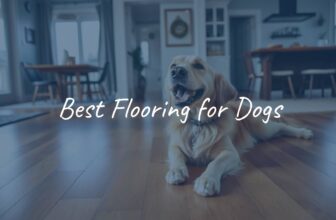
Picking a dog in your later years can bring joy, routine, and steady company. The best dogs for seniors usually fit a calmer lifestyle. They give lots of love and are easy to care for without needing long runs or advanced training. These pets often feel like family, bringing comfort, fun, and a clear reason to get up and move each day.
The word “senior” can mean many ages, often 55 to 65 and up. What matters most is your daily routine and what you can handle. This guide helps older adults explore dog ownership, with a focus on breeds that are loving, easy to live with, and a good match for different activity levels and homes.
Why Dogs Make Great Companions for Seniors
Benefits of Dog Ownership for Older Adults
The bond between people and dogs is strong and can greatly improve life for many older adults. A dog’s steady presence can ease loneliness. One study of people 60 and older found pet owners were 36 percent less likely to feel lonely than those without pets. This goes beyond having someone to talk to. Dogs bring quiet comfort and emotional support that many people find calming.
Caring for a dog also gives daily structure. Feeding, walking, and play create a routine and a sense of purpose. This steady pattern can help seniors whose schedules or social lives have changed.

Social and Emotional Advantages
Dogs help people connect. They spark chats with neighbors and other dog owners on walks and in parks. These small moments can grow into friendships and a wider social circle. More social contact supports emotional health and helps fight isolation.
On the emotional side, dogs can lower stress and may help reduce blood pressure. Their warm, loyal nature brings comfort and a feeling of safety. For people who spend a lot of time alone, a dog can be a true friend and a good listener. This bond can support clear thinking and healthy aging.
Physical Health Improvements
Dogs get you moving. For seniors, even short walks add helpful activity to the day. This steady, gentle movement supports balance, strength, and overall fitness. Studies show older adults who walk their dogs often have lower body weight and fewer doctor visits than those without pets. The goal is not hard workouts, but regular movement that keeps you active.
Feeding, brushing, and light play can also work the muscles and help flexibility. While a dog is not a replacement for medical advice, they are a natural prompt to move more. Dog ownership is also linked to a lower risk of death from heart disease, showing how wide their benefits can be for physical health.

What Factors Should Seniors Consider Before Choosing a Dog?
Finding the right dog is personal. You want a pet whose needs and temperament fit your life. Think about your energy, space, budget, and comfort level with training and grooming. A thoughtful choice helps both you and your dog enjoy life together.
Energy Level and Exercise Requirements
Energy level matters a lot. All dogs need some activity, but the amount varies by breed. If you like a slower pace, pick a dog happy with short, easy walks and indoor play. If you are active and enjoy longer walks, look for a breed that enjoys more movement. Be honest about your strength, time, and daily routine. A very active dog without enough outlets can get frustrated or chew things. A senior trying to keep up with a high-energy dog may feel stressed.
Size and Weight of the Dog
Size affects handling and comfort at home. Smaller dogs are easier to lift and control, which helps if your strength or balance is limited. They also fit well in apartments or smaller homes, which many seniors move to. A dog that doesn’t pull hard on the leash reduces fall risk. Large breeds can be gentle, but their size can make grooming, vet visits, and daily care harder. Think about your space, your ability to hold or lift a dog, and if a smaller dog would make daily life easier.
Grooming and Maintenance Needs
Grooming needs vary a lot. Some breeds need daily brushing and regular trips to a groomer. Others with short coats need little more than a quick brush each week. Decide how much time and money you want to spend on grooming. Also think about shedding. Some dogs shed very little, while others leave hair around the home. This can matter if you have allergies or prefer a tidy space.
Temperament and Compatibility with Lifestyle
Temperament is key. Look for gentle, friendly, and adaptable dogs. Breeds that want to please and learn quickly are easier to live with. If you often see grandchildren, choose a breed known to be good with kids. Think about whether you want a calm lapdog or a dog that likes frequent play. Some breeds are more independent or stubborn, which can be tough for first-time owners. Good breeders can explain typical traits and help match you with the right personality.
Allergies and Hypoallergenic Breeds
If you have allergies or breathing issues, picking a hypoallergenic breed can help. No dog is fully hypoallergenic, but some shed less and produce less dander. Poodles, Bichon Frises, and Miniature Schnauzers are common choices for allergy concerns. Spend time with the breed first to check your reaction. Regular grooming also helps lower dander in the home.
Lifespan and Senior’s Future Plans
Think about how long the dog will live and your plans for the years ahead. Many dogs live 10 years or more. A puppy is a long commitment. Adopting an adult or senior dog can be a great option. Older dogs often have known temperaments and may need less training. Also, set up a plan for who will care for your dog if you cannot, so your pet stays safe and loved.
Best Dog Breeds for Seniors
Great breeds for seniors are usually gentle, small to medium in size, and happy with moderate exercise. These dogs bring love and fun without placing heavy demands on their owners.
Cavalier King Charles Spaniel
The Cavalier King Charles Spaniel is a sweet, calm lapdog. They have kind eyes, soft coats, and a soft nature. Most welcome guests and get along well with family. At 11 to 18 pounds, they are easy to handle and do well in small homes.
Cavaliers fit many lifestyles. They enjoy short walks and also love cuddling. They learn quickly and want to please. Their silky coat needs regular brushing and some grooming to prevent mats. Their loving nature and low to moderate energy make them a strong pick for seniors who want a gentle friend.

Shih Tzu
The Shih Tzu is a small, cheerful dog, usually 9 to 16 pounds. They like to be near their person and are happy in many home types, from busy families to quiet apartments.
They can be a bit stubborn, but they learn well with patience. Exercise needs are low: short walks and indoor play are enough. Their long coat needs care. Many owners choose a short “puppy cut” for easier upkeep. With steady grooming, a Shih Tzu is a loving, easy companion.
Bichon Frise
The Bichon Frise is a joyful, friendly dog with a soft white coat. Most weigh 7 to 12 pounds. Bred as companion dogs, they love human company.
They are smart and easy to train. Daily play and a short walk keep them happy. Their curly coat needs grooming every month or two to prevent mats. Many people with allergies do well with Bichons because they shed very little dander.
Pug
Pugs are charming, loving, and very people-focused. They usually weigh 14 to 18 pounds. Pugs like laps, cuddles, and staying close to their owners.
They need only short walks and simple play. They shed, but a quick brush helps. Pugs train well and bring lots of smiles. Watch for breathing issues common to flat-faced breeds and for weight gain. Use a healthy diet and keep activity indoors during heat.
Pomeranian
Pomeranians are tiny, bright, and full of personality. They weigh 3 to 7 pounds and stand about 6 to 7 inches tall. They love laps and toys and are easy to carry.
Poms are smart and quick to learn. Indoor games and short walks meet their needs. Their fluffy double coat needs regular brushing and sheds more during certain seasons. Trimming helps keep it neat. They are alert and make good little watchdogs without being too loud when well trained.
French Bulldog
The French Bulldog is compact, sturdy, and playful without being wild. At 19 to 28 pounds, they are still manageable for most seniors. Frenchies are steady, friendly, and easy to live with. They do not bark much, which suits apartment life.
They enjoy short walks and playtime but tire easily. Grooming needs are low because of their short coat. Be aware of breathing and skin issues that can need regular vet care.
Havanese
The Havanese is a happy, gentle dog from Cuba. Most weigh under 13 pounds. They love people and do well in homes where someone is around most of the time. They are calm indoors and enjoy short walks.
Havanese learn tricks quickly and get along with kids and other dogs. They alert their families but are not prone to constant barking. Their silky hair grows continuously and needs routine grooming to prevent tangles. They travel well and adapt easily.
Yorkshire Terrier
The Yorkshire Terrier, or Yorkie, is small (about 6 to 8 pounds) with a bold spirit. They are loving, sharp, and sometimes a bit headstrong.
Yorkies shed very little, though their long coat needs daily brushing unless kept shorter. They enjoy walks and play but are content to relax near their person. Their small size makes them easy to carry and manage. They can be vocal, which can be helpful for seniors living alone. Early social time helps them stay confident and cheerful.
Miniature Schnauzer
Miniature Schnauzers suit seniors who like a bit more action. They usually weigh 11 to 19 pounds and are friendly, smart, and obedient. Their size works well for apartments.
They shed little, though their double coat often needs professional grooming. This lower shedding can help some allergy sufferers. They have moderate energy and enjoy games like fetch. With lifespans often over 12 years, they offer many years of company for active owners.
Beagle
Beagles are a great fit for seniors who stay active. Weighing 20 to 30 pounds, they are loyal, bright, and social. They love visits from family and enjoy being part of daily life.
They need regular walks and play. Because of their strong sense of smell, keep them on a leash or in a fenced area. Their short coat is easy to care for, though they do shed and benefit from brushing. Beagles bring fun and warmth to active homes.
Boston Terrier
Boston Terriers are small, sturdy, and friendly. At 12 to 25 pounds, they fit well with both active and more relaxed seniors. They enjoy hanging out at home and also like a daily walk. Their activity needs are moderate.
Their short coat is easy to groom, and shedding is light. They are affectionate and adaptable, do well in apartments, and are simple to handle.
Which Dog Breeds Are Best for Apartments or Small Spaces?
Apartment living can work very well with the right dog. Many breeds are happy in small spaces as long as they get attention, short walks, and play. Size, energy level, and temperament are the big factors to match with your home.
Top Small Dogs for Seniors in Apartments
The Cavalier King Charles Spaniel is a strong choice. Gentle and adaptable, they enjoy cuddles and short walks and fit small homes well.
The Shih Tzu also fits apartment life. They need little exercise and are happiest near their person. The Bichon Frise is another good option. They are cheerful and small, with moderate exercise needs that are easy to meet around an apartment building.
Pugs do well in small spaces. Their exercise needs are modest, and they love indoor cuddle time. The French Bulldog also suits apartments. They are generally quiet and don’t need long walks.
The Havanese thrives in apartments, especially with owners who are home often. Short walks and indoor play work well. The Yorkshire Terrier is tiny, people-focused, and easy to manage in tight spaces, as long as they get attention.

Active Dog Breeds for On-the-Go Seniors
Some seniors want a dog who joins them on regular walks and outings. If you enjoy an active life, choose a breed that likes exercise but won’t be unhappy on quieter days. Look for dogs that are eager to join, easy to train, and not demanding beyond your comfort level.
Breeds for Seniors with Active Lifestyles
The English Cocker Spaniel is a great match. They are medium-sized, lively, and enjoy a couple of 30-minute walks most days. They also like couch time. They learn well and travel easily.
The Beagle shines with active seniors too. They love walks and outdoor time and bring joy to daily outings. Keep them leashed or in a safe area because their noses lead the way.
The Miniature Schnauzer is another solid pick. They enjoy games and brisk walks and are alert and fun to train. Low shedding is a bonus after outdoor play.
Some larger dogs can work as well. The Greyhound often acts like a laid-back companion at home. They enjoy daily walks and an occasional sprint in a safe space, then relax the rest of the time. They are calm, affectionate, and easy to groom.
Remember that high energy is not the same as high stamina. Pick a dog that matches your pace so both of you stay happy and safe.
Dog Breeds Seniors May Want to Avoid
Not all breeds fit a senior’s routine. Some traits can make life harder, even if the dog is lovable. Think about energy, training needs, size, and temperament before you choose.
Dogs with High Energy or Intense Training Needs
Breeds with very high energy and strong work drives can be too much. Border Collies, Australian Shepherds, and Huskies need a lot of exercise and mental challenges. Without enough to do, they may become restless or chew and dig. Breeds that are very independent or stubborn, like the Shiba Inu or Pekingese, can be tough to train. Unless you have lots of training experience and the strength and time for it, these dogs may not be a good fit.
As time goes on, keeping up with a high-energy or hard-to-train dog can feel like a burden. Pick a dog whose activity level and training needs fit your abilities now and in the future.
Breeds with Higher Risk of Aggression or Size-Related Issues
Some breeds are hard to handle because of size and strength. Very large dogs like Great Danes, German Shepherds, Labrador Retrievers, and Bernese Mountain Dogs can pull hard and cause falls. Herding types, such as Rottweilers or Briards, may nudge or “herd” people, which can also be risky.
Some breeds may react more to strangers or other dogs, which can be a challenge in buildings with many neighbors. While every dog is an individual, seniors often do best with breeds known for calm, friendly behavior and easy handling.
Tips for Seniors Bringing a Dog Home
Bringing home a new dog is exciting. A little planning can help the first days and weeks go smoothly and help your new friend feel safe and settled.
Preparing Living Spaces for a New Dog
Before your dog arrives, make your home safe and simple to navigate. This is especially helpful for small or young dogs.
- Secure loose cords and store cleaning products and medicines out of reach
- Remove or move toxic plants
- Put breakable items in safe places
- Set up a quiet spot with a bed and bowls
- Use ramps or steps for breeds prone to back issues to avoid jumping

If you live in a senior community, check pet rules such as size limits or breed lists. Set up a spot for a crate or bed so your dog has a calm place to rest.
Adjusting the Routine for Mutual Comfort
Dogs like predictable schedules. Set regular times for meals, potty breaks, and walks or play. Fit these into your day in a way that feels natural to you. If you prefer mornings, walk then. If walking is hard on some days, consider a dog walker or choose a dog happy with indoor play and very short trips outside.
Be patient while your dog learns house rules. Use treats, praise, and gentle guidance. Aim for a routine that feels good for both of you. Small changes on your side and your dog’s side will help you settle into a peaceful rhythm.
Support and Resources for Senior Dog Owners
You do not have to do this alone. Help is available:
- Veterinarians for check-ups, diet advice, and health plans for older pets
- Professional groomers for breeds with higher grooming needs
- Local training classes to build good manners and meet other owners
- Dog daycare or pet sitters for travel days or appointments
- In-home senior care providers who can assist with pet tasks when needed
- Community groups and online forums for tips and shared experiences
With the right match and some planning, a dog can bring steady comfort, activity, and friendship to your daily life.






